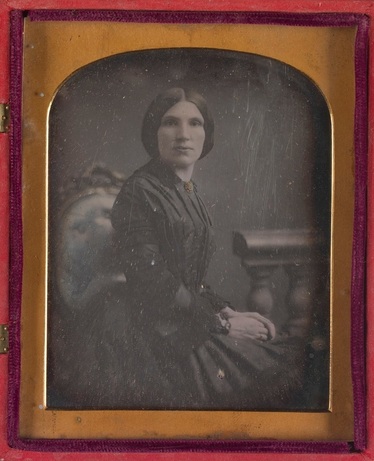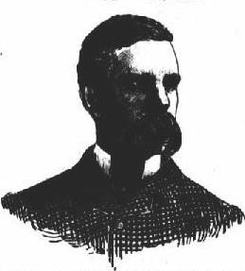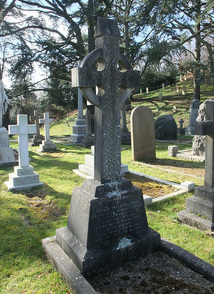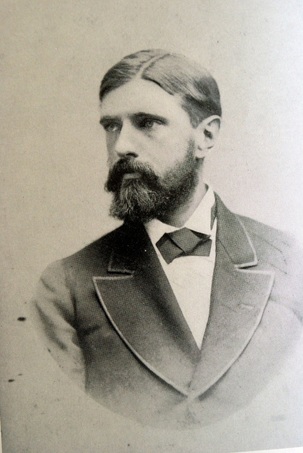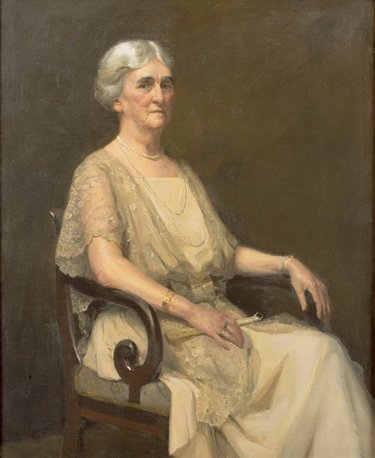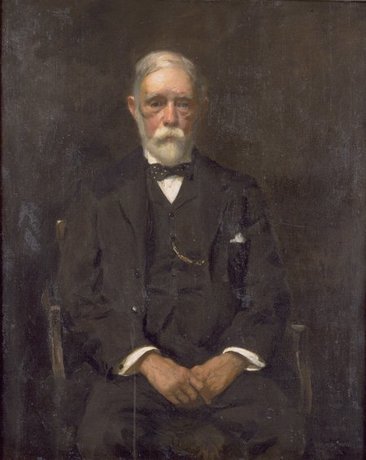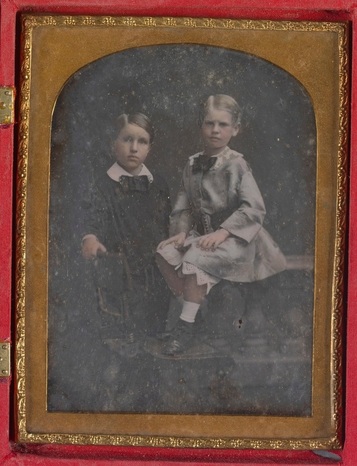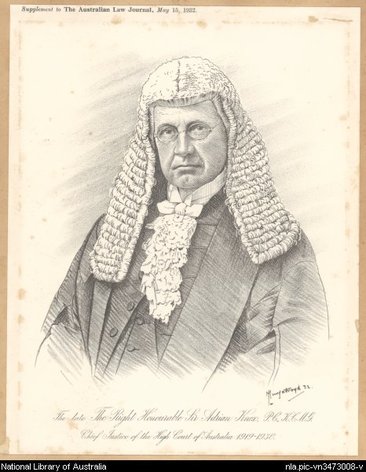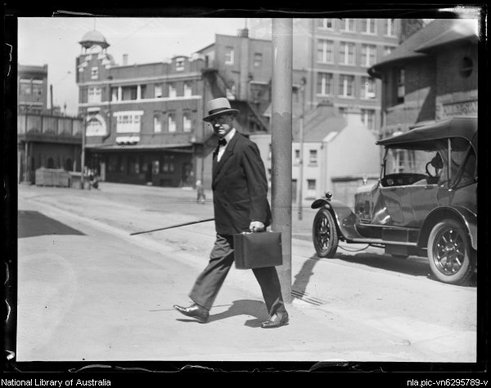the knox family
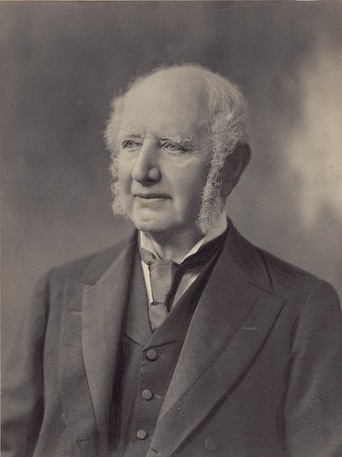 Sir Edward Knox
Sir Edward Knox
Sir Edward Knox was born in Denmark by Scottish parents and emigrated to Australia as a young man. He is well known as the 'King of Sugar', credited with transforming the sugar industry in Australia and creating an international conglomerate, Colonial Sugar Refining Company (known as CSR Limited), which today employs 3,600 people and generates revenues of more than AUS$1.7 billion.
Sir Edward was not only the founder of CSR but also a director of the Commercial Banking Company of Sydney (now part of NAB).
Several descendants of Sir Edward have had an enormous impact on Australia in the fields of business, law and diplomacy.
Sir Edward was not only the founder of CSR but also a director of the Commercial Banking Company of Sydney (now part of NAB).
Several descendants of Sir Edward have had an enormous impact on Australia in the fields of business, law and diplomacy.
Sir Edward knox (1819-1901)
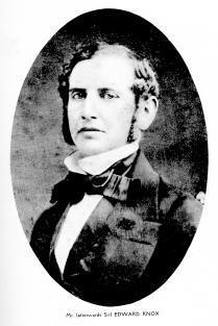 A young Edward Knox
A young Edward Knox
Edward Knox was born in Helsingør (Elsinore), Denmark on 6 June 1819. He was one of eight children and the son of George Knox (1779-1830) and Elizabeth Frances (nee Mullens; 1787-1855). George, a Scotsman, was a merchant in Helsingør, at the time a Scottish trading post, and died in 1830. His widow, Elizabeth, was left with children ranging from the ages of 16 years to 1 month and the family struggled.
Edward was educated by his mother’s family, and then joined his older brother, John, at Sorø Academy. He left the academy in 1834 (without graduating), and after commercial training at Lubeck Sugar Industries, Edward went to London to work as a junior clerk at his uncle’s merchant house at the age of 16. The plan was for him to join his older brother at the trading house “Mullens, Knox & Howden” but Edward instead decided to try his luck in Australia. After leaving Denmark in 1839 he arrived in Sydney on 26 February 1840.
After a few initial tough years farming, Edward started work at the Australian Auction Company before joining the Australasian Sugar Company in 1843 as a manager. Together with two associates, Edward bought a refinery and a distillery, which he leased to the Australasian Sugar Co. Edward went on to trade in real estate and slowly began to build a reputation for himself in the business community and accumulating capital.
Edward was known to find employment, either in the refineries or the distilleries, for Danes who had emigrated to Australia and if they showed promising talent, they would quickly advance within the company.
Edward was educated by his mother’s family, and then joined his older brother, John, at Sorø Academy. He left the academy in 1834 (without graduating), and after commercial training at Lubeck Sugar Industries, Edward went to London to work as a junior clerk at his uncle’s merchant house at the age of 16. The plan was for him to join his older brother at the trading house “Mullens, Knox & Howden” but Edward instead decided to try his luck in Australia. After leaving Denmark in 1839 he arrived in Sydney on 26 February 1840.
After a few initial tough years farming, Edward started work at the Australian Auction Company before joining the Australasian Sugar Company in 1843 as a manager. Together with two associates, Edward bought a refinery and a distillery, which he leased to the Australasian Sugar Co. Edward went on to trade in real estate and slowly began to build a reputation for himself in the business community and accumulating capital.
Edward was known to find employment, either in the refineries or the distilleries, for Danes who had emigrated to Australia and if they showed promising talent, they would quickly advance within the company.
other business interests
|
In 1844 he married Martha (nee Rutledge), an English immigrant and sister of William Rutledge, a merchant, landowner and banker), and they had 8 children.
The year after, Edward became a director of the Commercial Banking Co. of Sydney (a position he held on and off until his death in 1901). Later he also became a director of the Sydney Tramway and Railway Co., a chairman and trustee of the Liverpool and London and Globe Insurance Company, a director of the Royal Exchange of Sydney and he was a founding member of the Sydney Chamber of Commerce. On 1 January 1855, the Colonial Sugar Refining Company (CSR) was formed as a partnership with Edward as chairman. The knight bachelorIn 1857 Edward sold his house and some of his CSR shares and left for Europe with his family. However, before even making it to England, he was bombarded with news that the company was in serious trouble as world
|
sugar prices were falling and the company had lost £120,000. Edward returned to Australia immediately and gradually managed to get the company (and himself) out of financial ruin.
Under Edward’s leadership, CSR expanded and opened refineries in Queensland, New Zealand and later Fiji. In 1880, he passed on the general management of the company to his second-eldest son, Edward William. In 1898, as part of Queen Victoria’s 60th jubilee, Edward was knighted.
Edward was closely linked to the Anglican Church in Sydney and he was also a founding director of the Royal Prince Alfred Hospital as well as the Gentlemen’s Club, Union Club where he held the presidency from 1882 to 1901. Between 1856-57 as well as 1881 to 1894 he was also a member of the NSW Legislative Council.
Under Edward’s leadership, CSR expanded and opened refineries in Queensland, New Zealand and later Fiji. In 1880, he passed on the general management of the company to his second-eldest son, Edward William. In 1898, as part of Queen Victoria’s 60th jubilee, Edward was knighted.
Edward was closely linked to the Anglican Church in Sydney and he was also a founding director of the Royal Prince Alfred Hospital as well as the Gentlemen’s Club, Union Club where he held the presidency from 1882 to 1901. Between 1856-57 as well as 1881 to 1894 he was also a member of the NSW Legislative Council.
STrong ties to Denmark
Despite his Scottish ancestry, Edward considered himself to be Danish and maintained contact with Denmark and his Danish relatives (a younger brother, John, was a judge in Denmark) all throughout his life. He made several trips back to Denmark and was known to invite the whole family to stay with him at the exclusive Hotel d’Angleterre in Copenhagen whenever he was visiting. Although English had been spoken in his home growing up, Sir Edward spoke and corresponded in fluent Danish to his Danish family. His nephew, John Knox, later wrote that Edward never forgot his beloved homeland. In his will, he left multiple legacies to Danish family members including his sisters Fanny Rothe and Jessie Duyer (and her children) as well as the widow of his brother George, Betzy Knox.
Edward passed away in Woollahra, NSW, on 7 January 1901 at the age of 81. He became one of the foremost business managers in Sydney and upon his death he was described by the Australian press as a
Edward passed away in Woollahra, NSW, on 7 January 1901 at the age of 81. He became one of the foremost business managers in Sydney and upon his death he was described by the Australian press as a
noble spirited personality and a benefactor to Australia
The legacy of the Knox family name has lived on for several generations with some of Edward’s eight children excelling in various fields such as business and law.
George knox (1845-1888)
Edward’s eldest son, George Knox, was one of the most prominent barristers in New South Wales.
early years
|
George was born in 1845 in Sydney, New South Wales.
He was educated at Sydney Grammar School and later at Sydney University where he won scholarships before graduating with a BA in 1866 with first class honours in Mathematics. He subsequently went to England to study at Cambridge University gaining a BA in 1870 and an MA in 1873. He returned to Sydney and completed his (Australian) MA the following year. On 11 November 1873 he was called to the Bar of NSW and practised at the Equity Bar. |
a prominent career

In 1876, George married Jane de Winton (1850-1937; nee Price) and they had four children.
George was considered one of the best when it came to property and will cases. He had a large equity practice (which his younger brother, Adrian Knox, later took over) and was a lecturer in law at Sydney University. He was a member of the Board for the admission of barristers and was appointed a director of the Australian Mutual Provident Society (now known as AMP Limited). From 1887 to 1888 he was a Fellow of Senate.
Sadly, George had long suffered from heart disease and weakened lungs and following medical advice he moved to Egypt with his wife. However, just a few months after leaving, he died in Cairo on 9 March 1888, aged 43.
George was considered one of the best when it came to property and will cases. He had a large equity practice (which his younger brother, Adrian Knox, later took over) and was a lecturer in law at Sydney University. He was a member of the Board for the admission of barristers and was appointed a director of the Australian Mutual Provident Society (now known as AMP Limited). From 1887 to 1888 he was a Fellow of Senate.
Sadly, George had long suffered from heart disease and weakened lungs and following medical advice he moved to Egypt with his wife. However, just a few months after leaving, he died in Cairo on 9 March 1888, aged 43.
George's sons
|
One of George’s sons, Edward Valentine Knox (1882-1912), became a Captain with the Royal Dublin Fusilliers and served in the South African War 1901-1902. He drowned in the wreck of the SS Oceana aged 30.
A younger brother, Sir Geoffrey George Knox (1884-1958), became a noted British diplomat and later knighted by the British King. He was appointed to be ‘His Majesty’s Envoy Extraordinary and Minister Plenipotentiary at Budapest’ (1935-39) and later, British Ambassador in Brazil (1939-1944). In 1935 he was knighted and given the insignia of the K.C.M.O. (The Order of St Michael and St George, a British order of chivalry given to men or women who have rendered extraordinary or important non-military service in a foreign country). |
edward william knox (1847-1933)
|
Edward Knox’ second son, Edward William Knox, followed in his father’s footsteps as a director and later chairman of CSR.
Under his management, he turned the company into an international conglomerate and a leader in the Australian sugar industry. His career at the company spanned over a 69-year period, including 50 years as the company's managing director. early careerEdward William Knox, known as Ned, was born on 1 April 1847 in Sydney, NSW. He went to Sydney Grammar School and later joined CSR as a junior clerk.
In 1870, at the age of 23, Ned was sent to Clarence River to manage the company’s crushing mills. He spent the next years travelling around to explore different sugar industry methods and hiring overseas chemists for the same purpose. |
|
In 1878, Ned married Edith (nee Willis; 1855-1942) who was the daughter of a Scottish-born merchant and businessman. The couple had four daughters.
In 1880, Ned took over as managing director from Grafton Ross and within a short space of time he was put in charge of six large factories with mills in Queensland, Fiji and a refinery in New Zealand. a long csr careerIn 1885, Ned went to England for a year’s leave and when he came back he brought with him new processes including a chemical check aimed at improving work in the factories.
During the following years, Ned headed up the company’s expansion amalgamating three companies, improving the company’s manufacturing processes and building up the business, which became his life work. In 1920, he was made chairman of the company, and held the chairmanship until he retired in February 1933, four months before his death. |
After the death of his father in 1901, Ned expressed his admiration for his father
By far the ablest business man I have known. I could not fail to learn from his storehouse of wisdom and experience, and what success has come to me is all more or less the result of his training and advice
memberships and political work
|
Outside the corporate world, he was also a member of the Sydney University Senate from 1894 until 1919, a Trustee of Sydney Grammar School for 40 years and took over his father’s presidency of the exclusive gentleman’s club, Union Club (now known as Union, University and School Clubs).
He was one of the oldest members of the Australian Jockey Club, and a keen yachtsman, he was also a long-standing member of the Royal Sydney Yacht Squadron. He was a trustee of the National Art Gallery and of the Sydney Grammar School and an active supporter of the Church of England. He was also an alderman on Woollahra Municipal Council and a member of the board of Health. the danish familyDespite being born and brought up in Australia, Ned maintained his contact to Denmark, his father’s homeland. He stayed in touch all throughout his life with his cousin, John Knox, a judge in Denmark and the son of Sir Edward’s older brother, also called John.
|
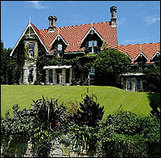 "Rona", Bellevue Hill, Sydney
"Rona", Bellevue Hill, Sydney
Ned died 26 June 1933 at his house “Rona” in Bellevue Hill, Sydney, aged 86, and was survived by his wife Edith.
Their house "Rona" would become home to five generations of the Knox family. It was sold in 1989 by the Rutledge family (descendants of the Knox family) for $9.6 million, and is a heritage-listed house today.
Their house "Rona" would become home to five generations of the Knox family. It was sold in 1989 by the Rutledge family (descendants of the Knox family) for $9.6 million, and is a heritage-listed house today.
thomas forster knox (1849-1919)
Thomas Forster Knox, Edward Knox’s third son, was prominent in Sydney’s commercial circles through his work for Commercial Banking of Sydney and Dalgety and Company Ltd.
early years
|
Thomas was born in Sydney in 1849 and later went, just as his brothers, to Sydney Grammar School. His first business exposure was working at the Commercial Banking Company of Sydney (which later merged with The National Bank of Australiasia and is now part of NAB), where his father was managing director. Here he spent 9 years before joining Mr. J. de V. Lamb as a stock and station agent through which he acquired a great deal of knowledge of pastoral and agricultural activities.
Thomas then worked briefly in England for Dalgety and Company who subsequently sent him to New Zealand to manage the company’s Christchurch branch. In 1877 he took over the joint management of the company’s Sydney branch and in 1884, he was appointed managing director. It is this role that Thomas was most known for not just furthering the interests of the firm but also developing the pastoral and agricultural industries of Australia. Thomas was also a director at the Commercial Banking Company of Sydney, a chairman of directors of the Permanent Trustee Company and a director of the United Insurance Company. Other directorships included the Australian Gaslight Co. and the Fresh Food and Ice Co. |
outside the business world
In 1885, Thomas joined the New South Wales Lancers (an Australian Army light cavalry reconnaissance regiment) with the rank of honourable major (later lieutenant-colonel) and became an assistant first to Major-General Sir George French and later to Brigadier-General Finn, State Commandants in New South Wales.
Thomas had many other interests and owned an extensive property at Wyalong in NSW as well as a cattle station in Queensland. He was also instrumental in providing wireless telegraphy instruments and other scientific equipment on Captain Macintosh’s ship, the Aurora, for Shackleton’s expedition to the South Polar Regions.
He was also a president of the Warrigal Club, a member of the Union club as well as the Australian Jockey Club where his younger brother, Sir Adrian Knox, was chairman. He also sat on the board of directors of the Carrington Hospital.
Thomas had many other interests and owned an extensive property at Wyalong in NSW as well as a cattle station in Queensland. He was also instrumental in providing wireless telegraphy instruments and other scientific equipment on Captain Macintosh’s ship, the Aurora, for Shackleton’s expedition to the South Polar Regions.
He was also a president of the Warrigal Club, a member of the Union club as well as the Australian Jockey Club where his younger brother, Sir Adrian Knox, was chairman. He also sat on the board of directors of the Carrington Hospital.
thomas' children
Thomas resigned as managing director of Dalgety and Company Ltd. in October 1912 and took over the chairmanship of the board, which he held until his death.
Thomas died on 19 January 1919 in Sydney at the age of 70 and was survived by his wife Amy Hope (nee Ritchie, 1858-1941) as well as two daughters (Helen and Nora) and two sons, Tom and Edward Ritchie Knox.
Thomas died on 19 January 1919 in Sydney at the age of 70 and was survived by his wife Amy Hope (nee Ritchie, 1858-1941) as well as two daughters (Helen and Nora) and two sons, Tom and Edward Ritchie Knox.
Sir edward ritchie knox (1889-1973)
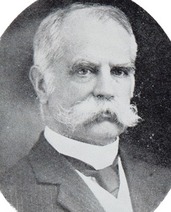 Sir Edward Ritchie Knox
Sir Edward Ritchie Knox
Edward Ritchie Knox, known as Ted, took over as general manager of CSR after Edward William Knox, his uncle. Under his management, the company continued to expand. Ted sat on the board between 1923 and 1964.
As part of the Queen’s birthday honours in 1956, Edward was knighted for his services to commerce and industry.
He died on 26 March 1973.
As part of the Queen’s birthday honours in 1956, Edward was knighted for his services to commerce and industry.
He died on 26 March 1973.
Sir adrian knox (1863-1932)
Edward Knox’ youngest son, Adrian Knox, was a leading King’s Counsel and Chief Justice of the High Court of Australia.
law career
|
Adrian was born 29 November 1863 in Sydney, NSW and after attending Waverley House in Sydney and later H.E. Southey’s school at Mittagong, he was sent to England in 1878, at the age of 14, to study at Harrow and Trinity College in Cambridge. He was admitted to the Inner Temple in 1883, received his Bachelor of Laws two years later and was called to the Bar the following year. A few months later, upon his return to Sydney, he was admitted to the colonial Bar.
Adrian read with his eldest brother George at Lyndon Chambers and following George’s death in 1888, he succeeded most of his practice. In 1894 Adrian was elected to the Legislative Assembly for Woollahra. In 1897 he married Florence Lawson and they had three children. Between 1902 (when it was founded) and 1919 Adrian served on the Council of the Bar of New South Wales and took silk in 1906 (having served as a Queen’s Counsel for more than 10 years). He was also a director of the Australian Mutual Provident Society and of the Commercial Union Insurance Company. As a barrister, Adrian became increasingly known as a leading constitutional lawyer and was briefed by Commonwealth and State governments. |
the red cross
From 1896, Adrian also served on the committee of the Australian Jockey Club, part of the time as chairman and he was the owner of several horses (one of which won the 1910 Sydney Cup).
However, during WW1, he gave up racing his own horses. He instead focused his efforts on the British Red Cross Society, where he was a foundation member of the executive of the New South Wales division. In 1915 he went to Egypt as an Australian Red Cross commissioner.
However, during WW1, he gave up racing his own horses. He instead focused his efforts on the British Red Cross Society, where he was a foundation member of the executive of the New South Wales division. In 1915 he went to Egypt as an Australian Red Cross commissioner.
chief justice of the court
|
Upon his return to Sydney the following year, Adrian served on a Commonwealth advisory committee focusing on legal questions arising from war problems. In 1918 he was awarded the British order of chivalry C.M.G. (Companion) and was sworn in as chief justice of the High Court in 1919.
To avoid any future conflicts of interest, Adrian resigned as chairman of the Australian Securities Exchange and sold all his shares (including his inheritance) in CSR. In 1920 he was appointed to the Privy Council and was honoured with Knight Commander of the Order of Saint Michael and Saint George (K.C.M.G.) the following year. He also travelled to England to sit on the Judicial Committee of the Privy Council, which dealt with the border dispute between the Irish Free State and Northern Ireland. |
last years
When he became a primary beneficiary under the will of a close friend, which in his view would have involved a direct participation in business and therefore incompatible with his judicial duties, Sir Adrian resigned as chief justice on 30 March 1930. He rejoined the board of the Australian Mutual Provident Society and also became a director of the Bank of New South Wales in 1931.
Despite having had a lucrative law practice, Sir Adrian was known for leading a reasonably frugal life, and never built a large house (as his brothers Edward and Tom) or speculated in real estate. Being much younger than the rest of the siblings and with three sisters separating him from three high-achieving brothers, Adrian was supposedly very spoilt by his sisters who doted on him.
Sir Adrian died on 27 April 1932 of heart disease and was survived by his wife and three children.
Despite having had a lucrative law practice, Sir Adrian was known for leading a reasonably frugal life, and never built a large house (as his brothers Edward and Tom) or speculated in real estate. Being much younger than the rest of the siblings and with three sisters separating him from three high-achieving brothers, Adrian was supposedly very spoilt by his sisters who doted on him.
Sir Adrian died on 27 April 1932 of heart disease and was survived by his wife and three children.
jessie knox (1853-1927) | fanny knox (1857-1944) | kate knox (1859-1946)
Edward Knox also had three surviving daugters. Jessie Knox married Eric Henry Mackay in 1882 and they had one daughter, Clara Ainsley Mackay (1885-1975) who married Greenville Miller, a Commander in the Royal Navy and private secretary to the NSW Governor, Sir Harry Rawson. Jessie died on 15 July 1927 in Fareham.
The two youngest daughters were Fanny Knox and Kate Knox who outlived all the other siblings. Both lived in Fiona, Edgecliff in New South Wales, and neither of them ever married or had children.
Fanny Knox died at the age of 88 in 1944.
Kate Knox died on 1 December 1946 aged 87 leaving a substantial estate valued at £335,000. There were multiple beneficiaries and other than family, Kate left sizeable sums mainly for educational and religious purposes. This included the North Sydney Church of England Grammar School for Boys, The King’s School in Parramatta, the Twilight House in Mosman and the Royal Prince Alfred Hospital. She also left money for the All Saints’ Church of England in Woollahra, St. Catherine’s Girls’ School in Waverley and the Charity Organisation and Relief Society.
Several relatives benefited from her will, predominantly her nephew (Sir) Edward Ritchie Knox. However, being deeply religious, Kate stipulated that any beneficiary who was to marry outside the Protestant religion or who would forsake the Protestant faith would forfeit all interest and right under her will.
The two youngest daughters were Fanny Knox and Kate Knox who outlived all the other siblings. Both lived in Fiona, Edgecliff in New South Wales, and neither of them ever married or had children.
Fanny Knox died at the age of 88 in 1944.
Kate Knox died on 1 December 1946 aged 87 leaving a substantial estate valued at £335,000. There were multiple beneficiaries and other than family, Kate left sizeable sums mainly for educational and religious purposes. This included the North Sydney Church of England Grammar School for Boys, The King’s School in Parramatta, the Twilight House in Mosman and the Royal Prince Alfred Hospital. She also left money for the All Saints’ Church of England in Woollahra, St. Catherine’s Girls’ School in Waverley and the Charity Organisation and Relief Society.
Several relatives benefited from her will, predominantly her nephew (Sir) Edward Ritchie Knox. However, being deeply religious, Kate stipulated that any beneficiary who was to marry outside the Protestant religion or who would forsake the Protestant faith would forfeit all interest and right under her will.
